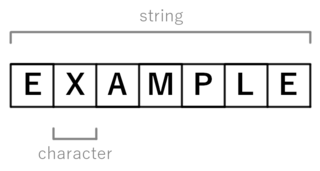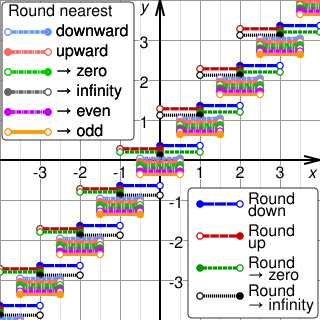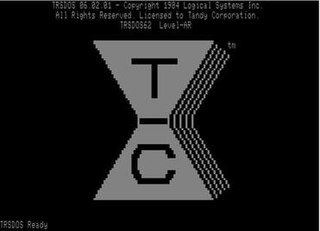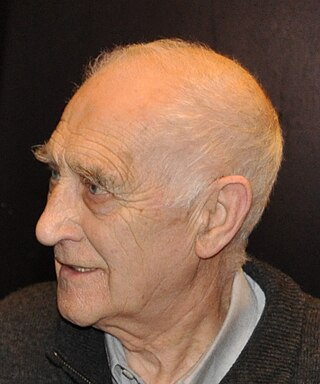Related Research Articles
The absolute infinite, in context often called "absolute", is an extension of the idea of infinity proposed by mathematician Georg Cantor. It can be thought of as a number that is bigger than any other conceivable or inconceivable quantity, either finite or transfinite. Cantor linked the absolute infinite with God, and believed that it had various mathematical properties, including the reflection principle: every property of the absolute infinite is also held by some smaller object.
Eiffel is an object-oriented programming language designed by Bertrand Meyer and Eiffel Software. Meyer conceived the language in 1985 with the goal of increasing the reliability of commercial software development. The first version was released in 1986. In 2005, the International Organization for Standardization (ISO) released a technical standard for Eiffel.

In computer programming, a string is traditionally a sequence of characters, either as a literal constant or as some kind of variable. The latter may allow its elements to be mutated and the length changed, or it may be fixed. A string is generally considered as a data type and is often implemented as an array data structure of bytes that stores a sequence of elements, typically characters, using some character encoding. String may also denote more general arrays or other sequence data types and structures.
In computing, NaN, standing for Not a Number, is a particular value of a numeric data type which is undefined as a number, such as the result of 0/0. Systematic use of NaNs was introduced by the IEEE 754 floating-point standard in 1985, along with the representation of other non-finite quantities such as infinities.

The Maildir e-mail format is a common way of storing email messages on a file system, rather than in a database. Each message is assigned a file with a unique name, and each mail folder is a file system directory containing these files. Maildir was designed by Daniel J. Bernstein circa 1995, with a major goal of eliminating the need for program code to handle file locking and unlocking through use of the local filesystem. Maildir design reflects the fact that the only operations valid for an email message is that it be created, deleted or have its status changed in some way.
Foundations of mathematics are the logical and mathematical framework that allows the development of mathematics without generating self-contradictory theories, and, in particular, to have reliable concepts of theorems, proofs, algorithms, etc. This may also include the philosophical study of the relation of this framework with reality.

Rounding or rounding off means replacing a number with an approximate value that has a shorter, simpler, or more explicit representation. For example, replacing $23.4476 with $23.45, the fraction 312/937 with 1/3, or the expression √2 with 1.414.

In mathematics, division by zero, division where the divisor (denominator) is zero, is a unique and problematic special case. Using fraction notation, the general example can be written as , where is the dividend (numerator).
Software design is the process of conceptualizing how a software system will work before it is implemented or modified. Software design also refers to the direct result of the design process – the concepts of how the software will work which consists of both design documentation and undocumented concepts.

GoboLinux is a Linux distribution whose most prominent feature is a reorganization of the traditional Linux file system. Rather than following the Filesystem Hierarchy Standard like most Unix-like systems, each program in a GoboLinux system has its own subdirectory tree, where all of its files may be found. Thus, a program "Foo" has all of its specific files and libraries in /Programs/Foo, under the corresponding version of this program at hand. For example, the commonly known GCC compiler suite version 8.1.0, would reside under the directory /Programs/GCC/8.1.0.
In computing, an icon is a pictogram or ideogram displayed on a computer screen in order to help the user navigate a computer system. The icon itself is a quickly comprehensible symbol of a software tool, function, or a data file, accessible on the system and is more like a traffic sign than a detailed illustration of the actual entity it represents. It can serve as an electronic hyperlink or file shortcut to access the program or data. The user can activate an icon using a mouse, pointer, finger, or voice commands. Their placement on the screen, also in relation to other icons, may provide further information to the user about their usage. In activating an icon, the user can move directly into and out of the identified function without knowing anything further about the location or requirements of the file or code.
The IEEE Standard for Floating-Point Arithmetic is a technical standard for floating-point arithmetic originally established in 1985 by the Institute of Electrical and Electronics Engineers (IEEE). The standard addressed many problems found in the diverse floating-point implementations that made them difficult to use reliably and portably. Many hardware floating-point units use the IEEE 754 standard.

TRSDOS is the operating system for the Tandy TRS-80 line of eight-bit Zilog Z80 microcomputers that were sold through Radio Shack from 1977 through 1991. Tandy's manuals recommended that it be pronounced triss-doss. TRSDOS should not be confused with Tandy DOS, a version of MS-DOS licensed from Microsoft for Tandy's x86 line of personal computers (PCs).
In computer science, arbitrary-precision arithmetic, also called bignum arithmetic, multiple-precision arithmetic, or sometimes infinite-precision arithmetic, indicates that calculations are performed on numbers whose digits of precision are potentially limited only by the available memory of the host system. This contrasts with the faster fixed-precision arithmetic found in most arithmetic logic unit (ALU) hardware, which typically offers between 8 and 64 bits of precision.

In computer programming, an integer overflow occurs when an arithmetic operation on integers attempts to create a numeric value that is outside of the range that can be represented with a given number of digits – either higher than the maximum or lower than the minimum representable value.
An application directory is a grouping of software code, help files and resources that together comprise a complete software package but are presented to the user as a single object.
Coding conventions are a set of guidelines for a specific programming language that recommend programming style, practices, and methods for each aspect of a program written in that language. These conventions usually cover file organization, indentation, comments, declarations, statements, white space, naming conventions, programming practices, programming principles, programming rules of thumb, architectural best practices, etc. These are guidelines for software structural quality. Software programmers are highly recommended to follow these guidelines to help improve the readability of their source code and make software maintenance easier. Coding conventions are only applicable to the human maintainers and peer reviewers of a software project. Conventions may be formalized in a documented set of rules that an entire team or company follows, or may be as informal as the habitual coding practices of an individual. Coding conventions are not enforced by compilers.

Willem Louis van der Poel was a Dutch computer scientist, who is known for designing one of the first computers to be designed in the Netherlands, the Zeer Eenvoudige Binaire Reken Automaat (ZEBRA), translated as Very Simple Binary Automatic Calculator.
A file format is a standard way that information is encoded for storage in a computer file. It specifies how bits are used to encode information in a digital storage medium. File formats may be either proprietary or free.
In user interface design and software design, the principle of least astonishment (POLA), also known as principle of least surprise, proposes that a component of a system should behave in a way that most users will expect it to behave, and therefore not astonish or surprise users. The following is a corollary of the principle: "If a necessary feature has a high astonishment factor, it may be necessary to redesign the feature."
References
- ↑ "Willem Louis Van Der Poel" . Retrieved 2023-08-25.
- ↑ "Zero-One-Infinity Rule". Jargon File .
- ↑ "The Zero, One, Infinity Disease" . Retrieved 2019-06-30.